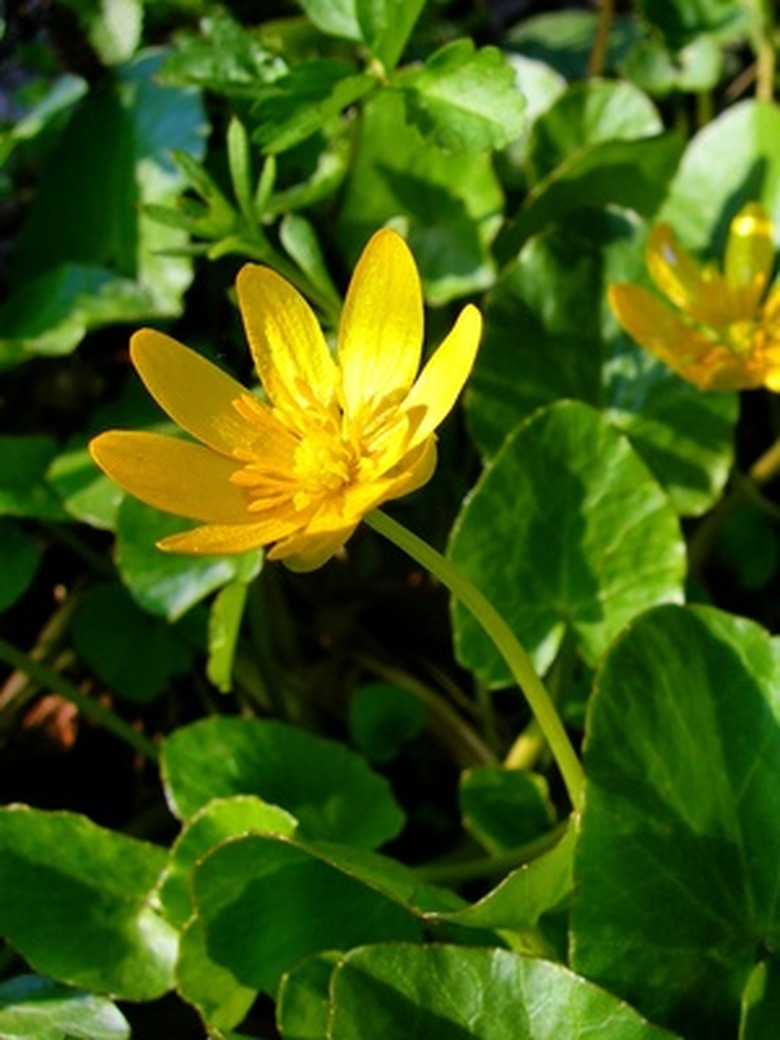Root Anatomy Of Ranunculus
Ranunculus is a genus of plants that includes many species of buttercups. Buttercups are dicots, meaning that their seeds form two cotyledons or embryonic leaves. When they develop, these leaves have veins in the form of nets. The seeds of monocotyledons have one embryonic leaf that develops parallel veins like those found in grasses. The buttercup root is a favorite of botany instructors because its structure can be easily observed under a microscope.
Root Cross Section
Viewed through a microscope, the epidermis or outer skin of a slice of ranunculus root is a thin layer of cells from which root hairs grow. Just beneath the epidermis, a wide zone of large cells called the cortex form most of the root's interior. The endodermis or inner skin, a circle of protective cells, lies inside the wide band of cortex cells. A layer of cells called the pericycle grow beneath the endodermis; the pericycle is responsible for the formation of lateral roots. The epidermis, cortex, endodermis and the pericycle surround the stele, the center of the ranunculus root.
- Ranunculus is a genus of plants that includes many species of buttercups.
- Viewed through a microscope, the epidermis or outer skin of a slice of ranunculus root is a thin layer of cells from which root hairs grow.
Stele
The stele contains xylem tubes and phloem tissue responsible for transporting water and nutrients up into the plant. Xylem tubes in the middle of the stele are in the shape of a fat plus sign or a star with four thick points. Phloem tubes surround the points and fill the valleys of the fat plus sign, forming a circle that is the stele. The xylem cells are far larger than the phloem cells.
Xylem
Water and nutrients move upward through vascular bundles called xylem. Water evaporates through leaf pores. This process, called transpiration, builds a negative pressure at the top of the xylem, drawing water upward from the soil to the stem, flowers and leaves of the ranunculus plant.
- The stele contains xylem tubes and phloem tissue responsible for transporting water and nutrients up into the plant.
- This process, called transpiration, builds a negative pressure at the top of the xylem, drawing water upward from the soil to the stem, flowers and leaves of the ranunculus plant.
Phloem
Phloem are chains of long cells with thick walls. These cells have a perforated sieve plate at each end, allowing water and nutrients to move from one phloem cell to the next through capillary action in which the surface tension of liquids move them upward through thin tubes.
Root Tip
The ranunculus root has a tip containing cells that slough off as the root pushes deeper into the soil. Just behind the root tip are apical meristem cells in the zone that makes the root grow longer. These undifferentiated cells grow by division. Some apical meristem cells develop into protoderm cells that become the root skin. Some form ground meristem cells that build the root cortex. Some form procambrium cells that turn into xylem and phloem.
- Phloem are chains of long cells with thick walls.
- Some form ground meristem cells that build the root cortex.
